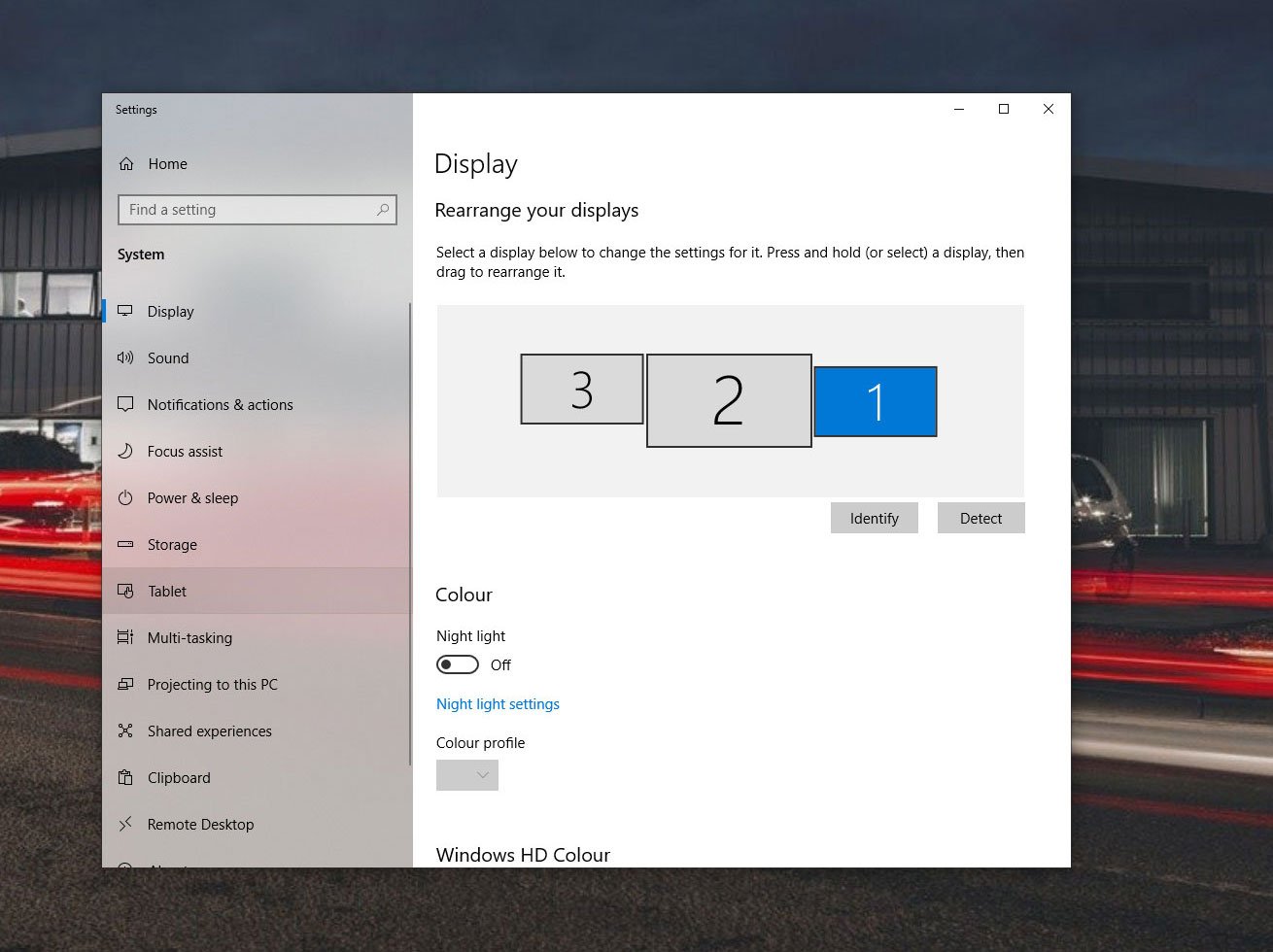If your refresh rate is not set to 144Hz, you can change it here. Click Display Adapter Properties and then the Monitor tab. Use the drop-down menu to find the proper refresh rate of 144 Hertz and click OK. … Then select Advanced Settings, navigate to the monitor tab, and choose 144Hz from the drop-down menu.
Thereof Can HDMI do 144 Hz? Does HDMI support 144Hz? Yes, depending on the HDMI version, resolution, and bandwidth. All versions of HDMI from HDMI 1.3 onward right through to HDMI 2.1 provide enough raw bandwidth for 144Hz, provided sacrifices are made in either color, chroma, compression, or resolution.
Why does my 144Hz monitor feel like 60Hz? Your Monitor Is Set at 60Hz by Default
One common issue is that your monitor could be set by default at 60 Hz. To change that, go to Settings > System > Display > Advanced Display Settings > Display Adapter Properties. Then, click on “Monitor” and pick your monitor’s refresh rate from the drop-down menu.
Regarding this How do I get my 144Hz monitor to run at 144Hz? Right-click the desktop and select “Screen Resolution.” Click the “Advanced Settings” link then click the “Monitor” tab and choose the refresh rate from the “Screen Refresh Rate” box.
How do I make sure my monitor is running at 144Hz?
Set Your Refresh Rate in Windows
On Windows 10, head to Settings > System > Display > Advanced Display Settings > Display Adapter Properties. Click the “Monitor” tab, choose your monitor’s advertised refresh rate from the “Screen Refresh Rate” list, and click “OK”.
Also Know Do I need DisplayPort for Gsync? Just like you need an Nvidia graphics card to use G-Sync, you need an AMD graphics card to use FreeSync. … One of the standouts is that FreeSync work over HDMI and DisplayPort, (which also works over USB Type-C), but G-Sync only works with DisplayPort, unless you’re using a G-Sync Compatible TV (more on that below).
Can HDMI 2.0 do 4K 120Hz? no! You don’t need an HDMI 2.1 connection for 120hz gaming, and many PC players have been able to experience 120fps for some time with an HDMI 2.0 connection. An HDMI 2.1 connection essentially allows for 120fps at 4K, or 8K at 60fps, while an HDMI 2.0 connection can allow for 120fps, but at either 1080p or 1440p.
identically Is DisplayPort faster than HDMI? Although you’ll find more devices that support HDMI than DisplayPort, in this context the answer to the question, ‘is DisplayPort better than HDMI,’ is an emphatic, yes. … In comparison, DisplayPort 1.4 has a maximum bandwidth of 32.4Gbps, which opens up much greater resolution and frame rate potential.
Is HDMI locked at 60Hz?
Yes, HDMI 1.4 can support up to 144Hz at 1920×1080. However, not all monitors with HDMI 1.4 necessarily do. Older 144Hz gaming monitors such as the Acer GN246HL, BenQ XL2411, BenQ XL2411Z, BenQ XL2430T, ASUS VG248QE, AOC G2460PF, etc are all limited to 60Hz over HDMI.
Also Can HDMI do more than 60Hz? The problem is that no computer monitors have HDMI 2.0 ports yet, so you are limited by the port, not the cable. Right now, HDMI on monitors is only up to 4k/60hz.
Can a 144Hz monitor run at 60Hz?
It will work at 60Hz. You can also set it to work at any refresh rate you like under 144Hz in the Nvidia control panel, assuming you have an Nvidia card. Theres no reason to drop it down from 144Hz though, more is always better.
Why is 120Hz instead of 144Hz? With a 144hz screen you have more sweet spots for fps. For example a 60hz screens sweet spots are 30 and 60 fps, 120 hz sweet spots are 24, 30, 40, 60 and 120 fps and 144hz are 24, 36, 48, 72 and 144.
Is 60 Hz a good refresh rate?
What is a Good Refresh Rate for TVs? Every modern TV has a refresh rate of either 60Hz or 120Hz. While 60Hz TVs are good enough for watching almost any videos without any problem, 120Hz TVs are usually better for watching movies and playing video games.
as a matter of fact How do I turn on G Sync?
How to enable G-Sync on your PC
- Right-click on your desktop.
- Select NVIDIA Control Panel.
- Expand the display item in the sidebar.
- Click on Set up G-Sync.
- Check the box next to Enable G-Sync.
- Below this choose whether you want G-Sync enabled for only full screen or full screen and windowed modes.
How do I make sure G-Sync is on? The first thing to do is to make sure you actually turn on the G-Sync setting on your PC.
- Right-click on your desktop.
- Select NVIDIA Control Panel.
- Expand the display item in the sidebar.
- Click on Set up G-Sync.
- Check the box next to Enable G-Sync.
What GPU do you need for G-Sync? Graphics Cards Supported: G-SYNC features require an NVIDIA GeForce® GTX 650 Ti BOOST GPU or higher.
How do I enable G-Sync on my monitor?
- From the NVIDIA Control Panel navigation tree pane, under Display, click Set up G-SYNC to open the associated page.
- If not checked, then click the Enable G-SYNC/G-SYNC Compatible check box.
- Select either Full screen mode or Windowed and full screen mode, depending on your system and the programs you plan to run.
Can HDMI handle 8k? HDMI® Specification 2.1 is the most recent update of the HDMI® specification and supports a range of higher video resolutions and refresh rates including 8K60 and 4K120, and resolutions up to 10K. Dynamic HDR formats are also supported, and bandwidth capability is increased up to 48Gbps.
Is 120fps the same as 120Hz?
They’re related but not synonymous. The 120Hz refers to the rate of refresh on a physical monitor or TV. That is, the frequency at which the monitor redraws the image. The 120fps indicates the number of video frames are in one second of video in a particular video file or stream.
How do I get 60Hz on my 4K TV? Make sure the resolution is set to 4K (3840 x 2160) If the screen feels a little choppy, tap on Display Adapter Properties at the bottom of the Window. A new Window will open up. Navigate to the ‘monitor tab’ and then select 60Hz as the refresh rate.
Can you run 144Hz on DisplayPort?
The simple answer is yes, and at multiple resolutions. … DisplayPort 1.2 can output 1080p and 1440p resolutions at 144Hz, while DisplayPort 1.3 and 1.4 increased bandwidth to manage up to 240Hz at those same resolutions and up to 120Hz at 4K.
Which DisplayPort should I use on GPU? Fortunately, there is a definite hierarchy for gamers when it comes to picking video ports. The simple answer is that you should probably be using a DisplayPort cable to connect your graphics card to your monitor. It offers the best bandwidth and full support for adaptive refresh features like G-Sync and FreeSync.
Does DisplayPort 1.2 support 4K?
DisplayPort 1.2: Supports up to 4K at 60Hz, some 1.2a ports may also support AMD’s FreeSync. DisplayPort 1.3: Supports up to 4K at 120Hz or 8K at 30Hz.
Does HDMI support G Sync? Just like you need an Nvidia graphics card to use G-Sync, you need an AMD graphics card to use FreeSync. … One of the standouts is that FreeSync work over HDMI and DisplayPort, (which also works over USB Type-C), but G-Sync only works with DisplayPort, unless you’re using a G-Sync Compatible TV (more on that below).
Which is better DisplayPort or HDMI?
When is DisplayPort the best option? DisplayPort cables can achieve a higher bandwidth than HDMI cables. If there’s a higher bandwidth, the cable transmits more signals at the same time. This mainly has an advantage if you want to connect multiple monitors to your computer.
Do I need HDMI 120Hz?
no! You don’t need an HDMI 2.1 connection for 120hz gaming, and many PC players have been able to experience 120fps for some time with an HDMI 2.0 connection. An HDMI 2.1 connection essentially allows for 120fps at 4K, or 8K at 60fps, while an HDMI 2.0 connection can allow for 120fps, but at either 1080p or 1440p.
Don’t forget to share this post with your friends !














Leave a Review